Disclosure: This article contains affiliate links. We may earn a commission from purchases at no extra cost to you, which helps our travel content.
The morning mist clings to the emerald slopes as I sip my tinto (Colombian black coffee) at a small roadside stand in La Calera, just outside Bogotá. The capital sprawls below, a concrete jungle nestled in a valley surrounded by the magnificent Eastern Cordillera of the Andes. For all Bogotá's urban energy—its museums, street art, and culinary delights—the city's true magic lies in its geographical blessing: being completely encircled by hikeable mountains offering soul-stirring vistas. Having traversed mountain ranges from the Himalayas to the Australian Alps, I've developed a particular fondness for these Andean giants that stand sentinel over Colombia's capital. They offer something rare: the ability to be deep in wilderness just hours after navigating city streets. As a solo traveler with an artist's eye and adventurer's spirit, these accessible peaks have become my canvas for both photography and sketching—each trail revealing new perspectives on the relationship between this metropolis and its ancient mountain guardians.
Monserrate: The Sacred Peak That Watches Over Bogotá
While most tourists take the cable car or funicular to Monserrate's summit at 3,152 meters, the pilgrim's path—a steep stone stairway of over 1,500 steps—offers the most rewarding approach. I set out before dawn, my headlamp illuminating the path as local devotees make their way up alongside me, some on their knees in religious devotion.
The trail ascends through cloud forest ecosystems, where the vegetation gradually shifts with the altitude. The predawn climb means you'll likely have moments of solitude between groups of pilgrims—perfect for pausing to sketch the emerging silhouette of the city below. I always carry a small watercolor kit in my pack; there's something meditative about capturing the gradient of blues and purples as night surrenders to morning over the Bogotá savanna.
Reaching the summit just before sunrise rewards you with a spectacular light show as the first golden rays touch the white church that crowns the mountain. This 17th-century sanctuary dedicated to the Fallen Lord is as much a cultural landmark as it is a religious one. The panorama from here encompasses not just Bogotá in its entirety but stretches to reveal the vastness of the Andean landscape beyond.
After exploring the summit and perhaps enjoying a traditional breakfast of hot chocolate and almojábana (cheese bread) at one of the restaurants, I recommend descending via a different route than the main pilgrim's path. The less-traveled Sendero Ecológico winds through denser vegetation, offering glimpses of hummingbirds and the occasional Andean guan. The biodiversity here serves as a reminder of what once covered these mountains before the urban expansion below.
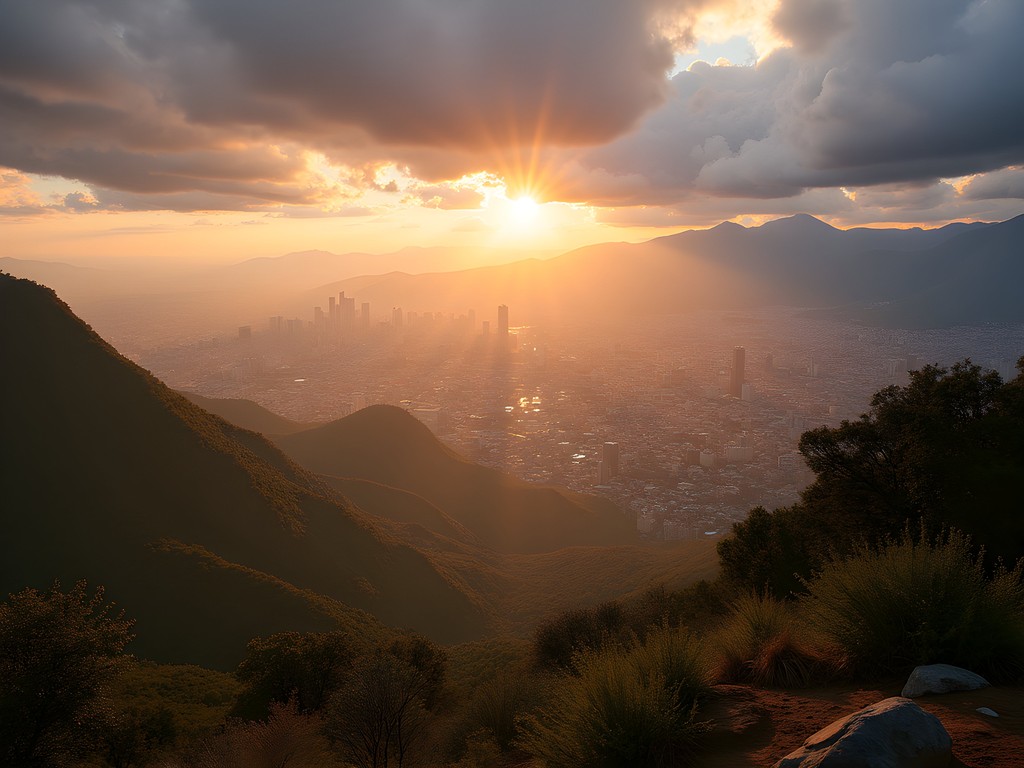
💡 Pro Tips
- Start your climb before 7 AM to avoid both crowds and the midday heat
- Monday mornings offer the most solitary experience as the mountain is closed on Sundays
- Bring cash for vendors at the top—the hot agua de panela (sugar cane drink) is perfect for refueling
Quebrada La Vieja: The Urban Wilderness Escape
Hidden in plain sight within the eastern edge of Bogotá lies Quebrada La Vieja, a natural treasure that feels impossibly distant from city life despite its location. The trail begins in the upscale Rosales neighborhood, where at 5:30 AM sharp, park rangers open the gates to a limited number of hikers each day.
What makes La Vieja special is its accessibility combined with authentic wilderness. Within minutes of starting the trail, the urban soundtrack fades, replaced by rushing water from the quebrada (creek) and a chorus of Andean birds. The path follows the waterway up through increasingly pristine cloud forest—a microclimate that collects morning mist, creating an ethereal atmosphere perfect for photography.
The trail gains elevation quickly, switchbacking up the mountain through changing vegetation zones. About halfway up, you'll encounter a small waterfall that provides a natural rest point. I've spent many mornings here with my travel journal, capturing the play of light through the canopy as the sun rises and transforms the forest.
After approximately 90 minutes of steady climbing, you reach a natural viewpoint called El Mirador. Unlike Monserrate with its church and restaurants, this summit offers nothing but a simple wooden cross and unobstructed views. The northern expanse of Bogotá unfolds below, while the páramo ecosystem—unique to high Andean regions—surrounds you with its characteristic frailejones plants, their fuzzy leaves capturing moisture from passing clouds.
The limited entry system means you'll share this experience with only a handful of locals—mostly dedicated runners and nature enthusiasts. Conversations flow easily here, and I've received some of my best tips about Colombian art galleries and hidden cafés while catching my breath alongside Bogotanos at the summit.
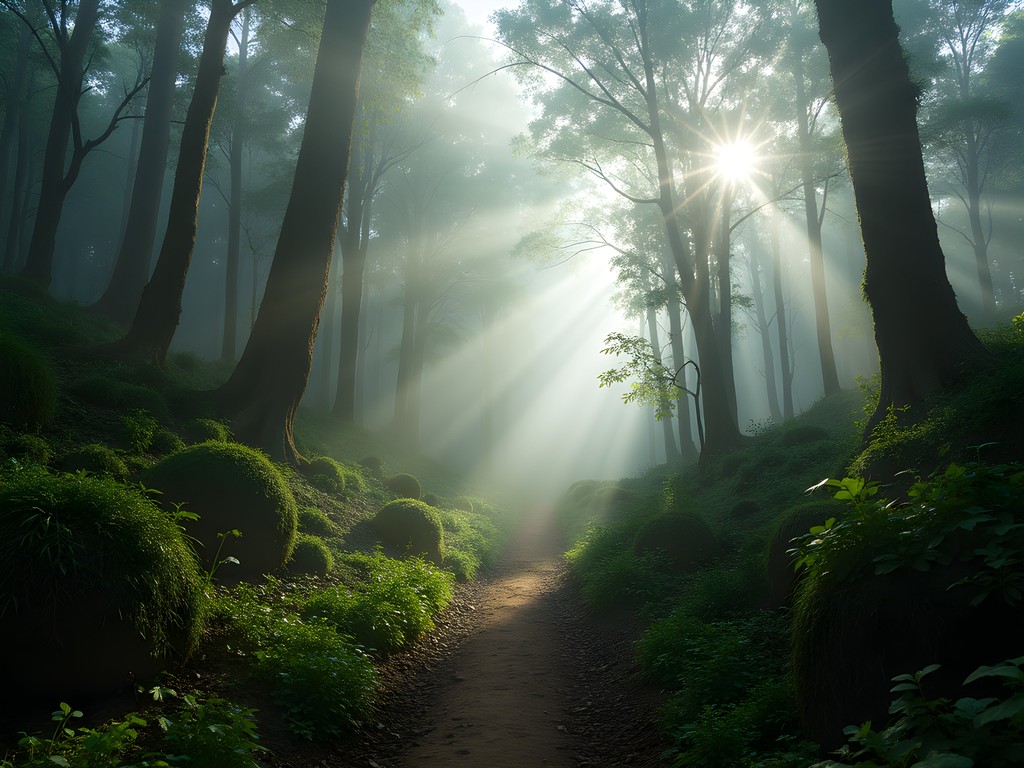
💡 Pro Tips
- Arrive by 5:15 AM to ensure entry, as they limit daily hikers
- Bring identification—they register all visitors at the entrance
- The trail closes at 1 PM, with no exceptions, so begin your descent by noon at the latest
Cerro de Guadalupe: The Lesser-Known Giant
While Monserrate draws the crowds, its neighboring peak—Guadalupe—offers a more solitary and challenging experience. Crowned by a massive 15-meter white statue of the Virgin Mary that's visible from much of Bogotá, this 3,317-meter mountain provides what I consider the most comprehensive views of the city and surrounding landscape.
The ascent to Guadalupe requires serious preparation. The trail is less maintained, steeper in sections, and significantly less trafficked than its famous neighbor. This isolation is both its challenge and its charm. I recommend hiring a local guide for your first attempt, not just for safety but for the cultural context they provide about the mountain's significance to bogotanos.
The route begins near the Circunvalar road and immediately plunges into dense vegetation. The initial section follows a cobblestone path that dates back to colonial times before transitioning to natural trails that can become quite technical. My trekking poles have proven invaluable on these steep sections, especially during the fall when afternoon rain can make the descent slippery.
What captivates me about Guadalupe is how the ecosystem transforms dramatically with elevation gain. The lower sections feature typical Andean cloud forest, but as you climb higher, the vegetation shortens and the iconic frailejones appear—prehistoric-looking plants with woolly leaves that have adapted to the harsh páramo conditions. These unique plants create otherworldly landscapes that seem more suited to a fantasy film than a hike just outside a major metropolis.
Reaching the statue requires approximately three hours of steady climbing. The monument itself, constructed in the 1940s, stands on a platform that offers 360-degree views. On clear days, you can see not just Bogotá but all the way to the snowcapped peaks of Los Nevados National Park over 100 kilometers away. The solitude at the summit provides a perfect opportunity for meditation or sketching—I've filled countless pages capturing the dramatic cloud formations that build over the afternoon across the high-altitude landscape.

💡 Pro Tips
- This hike requires proper preparation—bring layers, rain protection, and extra water
- Consider hiring a local guide through community tourism initiatives like Bogotá&Región
- Start no later than 8 AM to ensure you're off the mountain before afternoon weather changes
Páramo de Sumapaz: Journey to Earth's Largest Alpine Tundra
For the truly adventurous solo traveler seeking to experience the most unique ecosystem surrounding Bogotá, Páramo de Sumapaz represents the ultimate day trip. Technically still within Bogotá's city limits (making it the world's largest urban park), this vast páramo is Earth's largest alpine tundra ecosystem—a high-altitude wonderland that feels like walking on another planet.
Reaching Sumapaz requires either joining a specialized tour or renting a vehicle with high clearance. The journey takes approximately 3 hours from central Bogotá, passing through rural communities where life moves at a different rhythm. I recommend leaving the city by 5 AM to maximize your time in the páramo before afternoon weather typically deteriorates.
What makes Sumapaz extraordinary is its otherworldly landscape—rolling hills covered with frailejones (the iconic furry plants that can live for hundreds of years), crystal-clear lagoons reflecting perfect skies, and expansive views that seem to stretch forever. This ecosystem serves as Bogotá's water factory, with the páramo's unique vegetation acting like a giant sponge that captures moisture from passing clouds.
The main hiking route follows the Las Catorce Lagunas (Fourteen Lagoons) trail, a moderately difficult 12-kilometer loop that showcases the páramo's diversity. The altitude here ranges between 3,500 and 4,000 meters above sea level, meaning oxygen is noticeably thinner. My altitude sickness pills have helped me adjust more comfortably, though I still recommend taking the first hour at a gentle pace while your body acclimatizes.
As an artist, I find Sumapaz offers the most compelling landscapes for both photography and sketching. The interplay of light across the undulating terrain creates ever-changing shadows, while the frailejones—some standing over 3 meters tall and hundreds of years old—provide fascinating subjects with their anthropomorphic forms. The quality of light at this altitude is unlike anywhere else, with extraordinary clarity that makes colors appear more saturated and distances difficult to judge.
Beyond its visual appeal, Sumapaz holds profound ecological significance. This fragile ecosystem faces threats from climate change, with rising temperatures pushing the delicate balance of species toward extinction. Hiking here comes with responsibility—stay strictly on marked trails, pack out all waste, and respect the absolute prohibition on fires or camping.
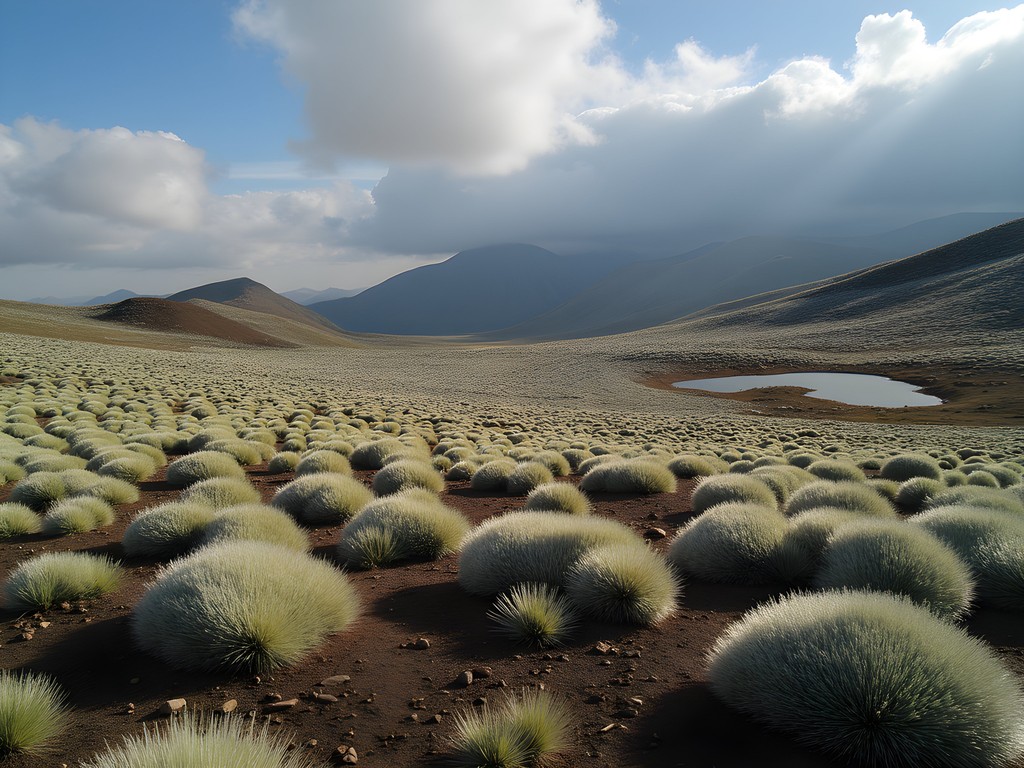
💡 Pro Tips
- Prepare for four seasons in one day—layers are essential as temperatures can swing dramatically
- The altitude affects everyone differently; move slowly and drink plenty of water
- Get the necessary permits in advance through the National Natural Parks office in Bogotá
Safety and Cultural Considerations for Solo Hikers
Hiking solo in the mountains surrounding Bogotá offers unparalleled freedom and connection with nature, but it requires careful preparation and cultural awareness. After multiple visits to these trails over the years, I've developed practices that balance adventure with safety.
First, understand that security situations can change. While many trails have become significantly safer in recent years, always check current conditions before setting out. I make it a habit to speak with locals—hotel staff, restaurant owners, or taxi drivers—to get their assessment of trail conditions. Colombian people are incredibly helpful and will give honest advice about which areas are currently recommended for solo travelers.
Second, timing is everything. Most trails are safest when hiked early in the morning (5-10 AM) when local exercise enthusiasts are out in numbers. This isn't just for security—afternoon weather patterns typically bring rain and fog that can make navigation challenging and trails dangerous. I've learned this lesson firsthand after being caught in a sudden downpour on Quebrada La Vieja that transformed gentle streams into rushing torrents within minutes.
Third, dress appropriately—both for safety and cultural sensitivity. Bogotá's mountain weather is notoriously changeable, requiring layers that can adapt to conditions. My go-to setup includes moisture-wicking base layers, a warm mid-layer, and a reliable rain jacket that packs down small but provides essential protection from sudden showers. Equally important is avoiding flashy clothing or equipment that might draw unwanted attention in urban areas before and after your hike.
Finally, embrace the local hiking culture. Colombians are incredibly sociable on trails—a simple "Buenos días" goes a long way and often leads to wonderful conversations. Some of my most meaningful connections in Colombia have come from chance encounters with local hikers eager to share their knowledge of the mountains. This social aspect also enhances safety, as fellow hikers look out for one another on the trails.
For women hiking solo, I recommend connecting with local hiking groups like 'Bogotá Hiking' or 'Mujeres a la Montaña' through social media. These communities organize regular group hikes and provide valuable support networks for international visitors wanting to explore beyond the standard tourist trails.
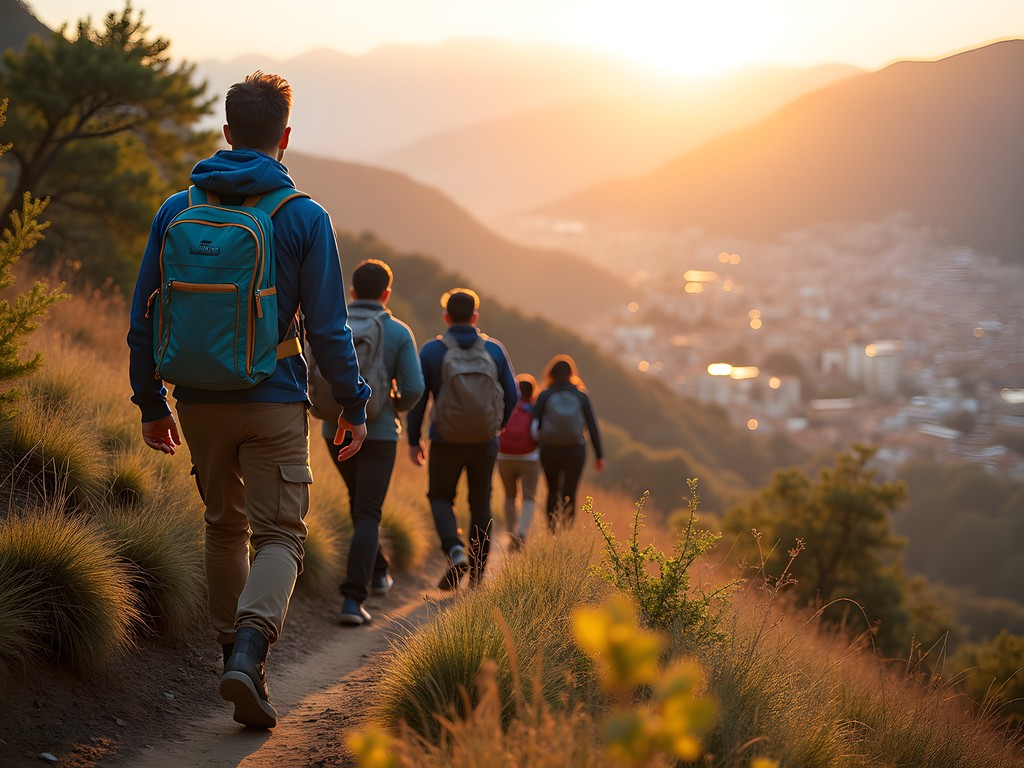
💡 Pro Tips
- Register your hiking plans with your accommodation or a trusted local contact
- Download offline maps using apps like Wikiloc or AllTrails that feature user-verified trails
- Carry a basic Spanish phrasebook or download a translation app that works offline
Final Thoughts
As I sketch the last strokes capturing Bogotá's skyline from Quebrada La Vieja's summit, I reflect on how these mountain trails reveal Colombia's true character—resilient, breathtaking, and full of unexpected beauty. The Andean peaks surrounding this vibrant capital aren't merely geographical features; they're living connections to pre-Colombian heritage, ecological treasures, and daily sources of inspiration for locals and visitors alike. For the solo traveler willing to rise before dawn and venture beyond tourist circuits, these accessible mountains offer rare gifts: solitude within reach of urban amenities, cultural exchanges on sunlit trails, and perspectives that transform how you see this complex, captivating city. Pack your boots, prepare with respect for both nature and local customs, and discover why Bogotá's true essence can only be understood by climbing the ancient guardians that embrace it. The mountains are calling—and they speak with Colombian accents.
✨ Key Takeaways
- Bogotá's surrounding peaks offer world-class hiking experiences just minutes from urban centers
- Early morning starts are essential for both safety and the best weather conditions
- The páramo ecosystems surrounding Bogotá are ecologically unique and increasingly threatened
- Connecting with local hiking communities enhances both safety and cultural immersion
📋 Practical Information
Best Time to Visit
September-November (fall) or December-February (dry season)
Budget Estimate
$30-50 USD per day including transportation and meals
Recommended Duration
4-5 days to experience multiple trails
Difficulty Level
Moderate To Challenging Due To Altitude And Terrain

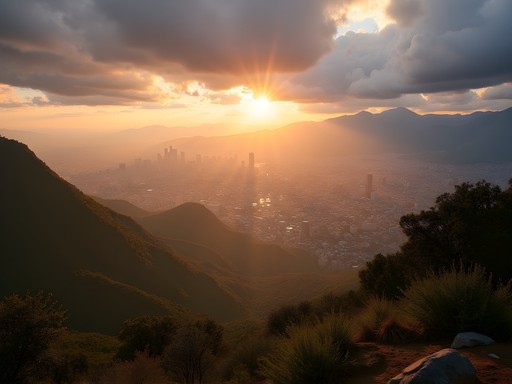
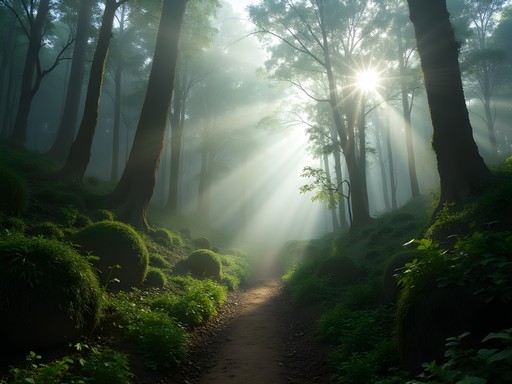
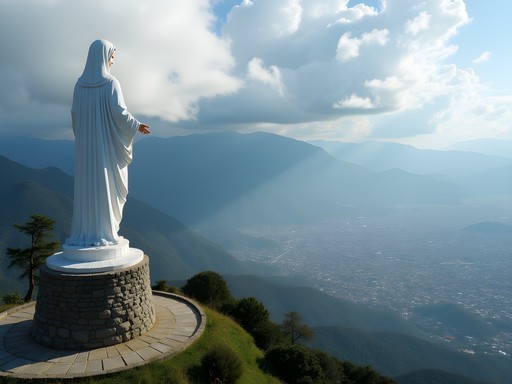

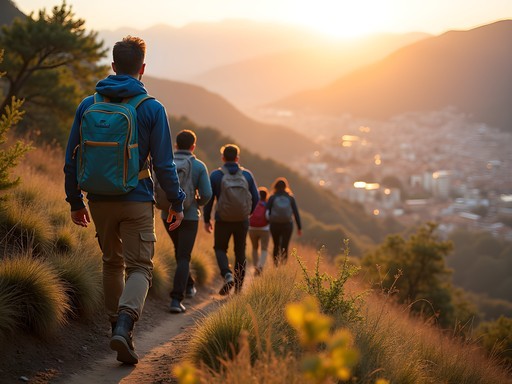




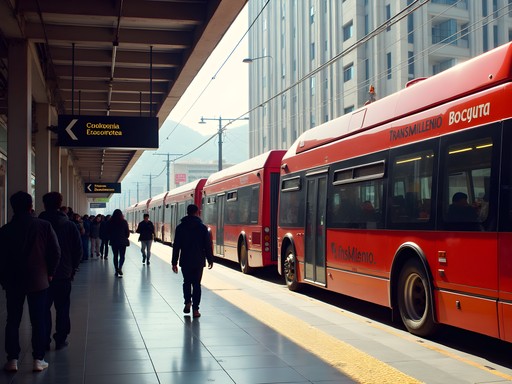
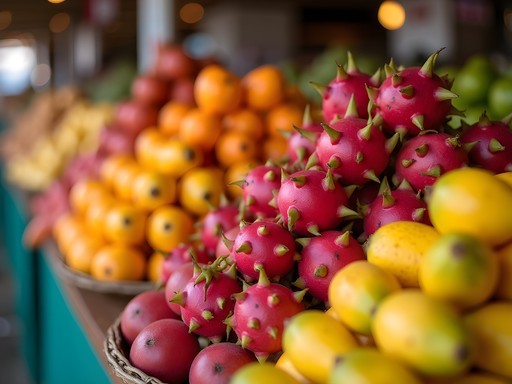
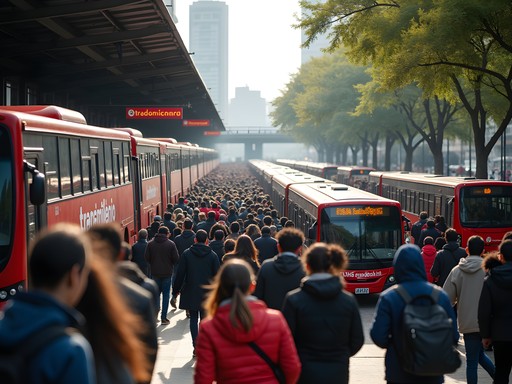


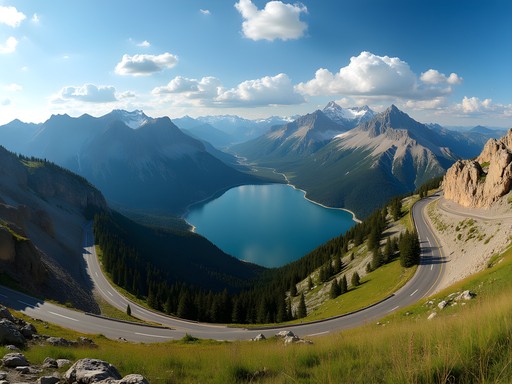
Comments
summerwanderer
Those photos from Páramo de Sumapaz are incredible! Adding this to my bucket list for sure!
journeynomad
The páramo ecosystem is like being on another planet! Just remember it's much colder up there than in the city.
Frank Garcia
Great post Amit! I'd add Chingaza National Park to this list - it's about 1.5 hours from Bogotá and has some of the most otherworldly páramo landscapes I've ever seen. The high altitude (3,200m+) makes it challenging but worth it. For anyone heading to these hikes, I recommend bringing layers as the mountain weather changes quickly. My hiking poles were lifesavers on the steep descents around La Calera. Also, download the AllTrails app and save the maps offline before you go - cell service is spotty in the mountains.
springwalker
Planning to visit Bogotá in March. How difficult is the Monserrate hike for someone with moderate fitness? And is it safe to do it alone?
Frank Garcia
I did Monserrate solo last year - it's definitely doable with moderate fitness! Just take your time on the steps (there are MANY). Go early morning (6-8am) when there are lots of locals exercising. That's when it's safest and you avoid the midday heat. The path is well-marked and busy on weekends. Bring a light jacket as it gets chilly at the top, even when it's warm in the city.
springwalker
Thanks Frank! That's really helpful. Did you take the cable car down or hike both ways?
Frank Garcia
I hiked up and took the cable car down to save my knees! Lots of people do this combo. The views from the cable car are amazing too!
journeynomad
Just got back from Quebrada La Vieja last week and it was incredible! The early morning start was worth it to watch the city wake up below. We saw several hummingbirds and even a small group of monkeys. The trail was more challenging than I expected though - definitely bring proper hiking shoes and plenty of water. The checkpoint system they have in place made me feel super safe as a solo traveler.
summerwanderer
Did you need to register in advance for Quebrada La Vieja? I heard there's a daily limit on hikers.
journeynomad
Yes! You need to register online through the CAR website at least 24hrs before. They only allow about 100 people per day and spots fill up fast, especially on weekends.
springguy
OMG THANK YOU for writing about Cerro de Guadalupe!! Everyone always talks about Monserrate but we did Guadalupe last week and had the whole trail practically to ourselves! The views were INSANE and that little coffee shop at the base made the best hot chocolate I've ever had. Did you try their arepas con queso??? Life-changing!!
freeexplorer
How difficult was the Guadalupe trail? Good for beginners?
springguy
It's moderate - steeper than Monserrate but shorter overall. Took us about 2 hours up with plenty of photo stops. Definitely doable for beginners who are reasonably fit!
Jean Wells
I hiked Quebrada La Vieja last month and was pleasantly surprised by how accessible it is from the city center. The biodiversity is remarkable - I identified at least 12 different bird species during my ascent. One thing to note is the reservation system has changed since your post; hikers now need to register 48 hours in advance through the CAR website rather than 24. The morning mist you described is indeed magical, but I'd add that proper waterproof hiking boots are essential during the rainy season. My Merrell Moab 2 waterproof boots were invaluable when parts of the trail turned muddy.
Amit Sanchez
Thanks for that update on the reservation system, Jean! Very helpful information. And yes, the bird watching there is exceptional - did you spot any hummingbirds?
Jean Wells
Yes! Several Black-tailed Trainbearers and I believe I spotted a Sword-billed Hummingbird, though it was quite fleeting. The local guide mentioned November-December is peak season for hummingbird diversity.
freeexplorer
Those views from Monserrate are incredible! Added to my bucket list!
coffeetime
Great post! How safe would you say these trails are for solo hikers? I'm planning a trip to Bogotá in October and would love to explore some of these peaks on my own.
Amit Sanchez
Thanks for reading! Monserrate and Quebrada La Vieja are quite safe as they're popular and well-traveled. I'd recommend going in the morning (6-10am) when there are more hikers around. For Páramo de Sumapaz, definitely go with a group or guide - it's remote and weather can change quickly!
coffeetime
That's super helpful, thanks! Will definitely stick to the more popular trails then since I'll be solo.
photobackpacker
STUNNING photos of the páramo! Those frailejones plants look like something from another planet! I've hiked all around South America but never seen anything like that ecosystem. Adding this to my bucket list immediately!
backpackway
The páramo is incredible! Bring layers though - it can go from sunny to freezing in minutes up there.
Riley Griffin
Amit, your article brought back so many memories! We tackled Monserrate last summer with our teenage boys and learned the hard way about altitude adjustment. Coming from Oklahoma, none of us were prepared for hiking at 10,000+ feet! We spent 3 days in Bogotá before attempting it, which helped, but still had to take it slow. The funicular down was a lifesaver after the climb up. One tip for families: we carried our altitude sickness pills which helped my youngest who got a headache halfway up. Also worth noting that the trail can get quite slippery after rain - proper hiking shoes are a must.
Venture X
Premium card with 2X miles, $300 travel credit, Priority Pass